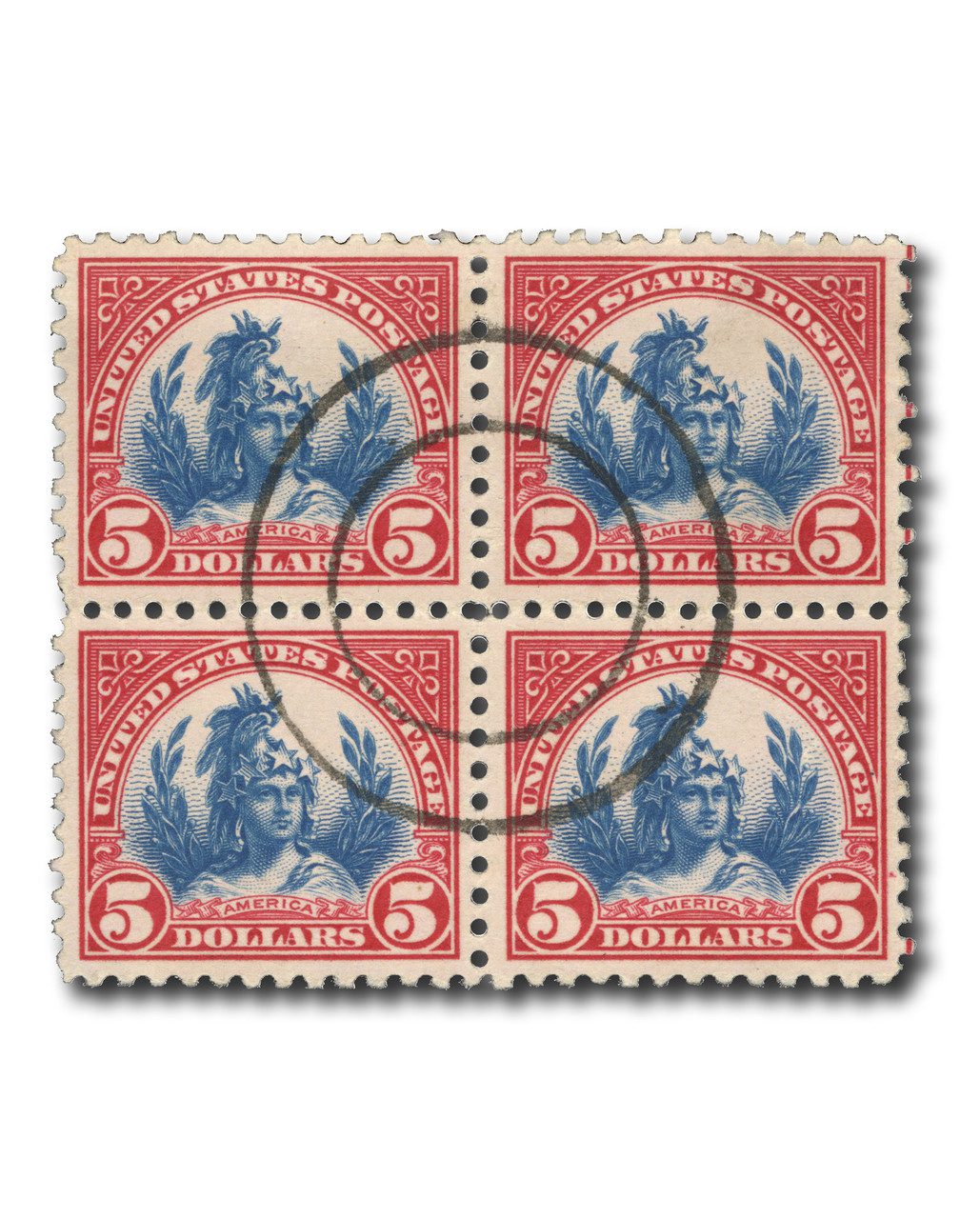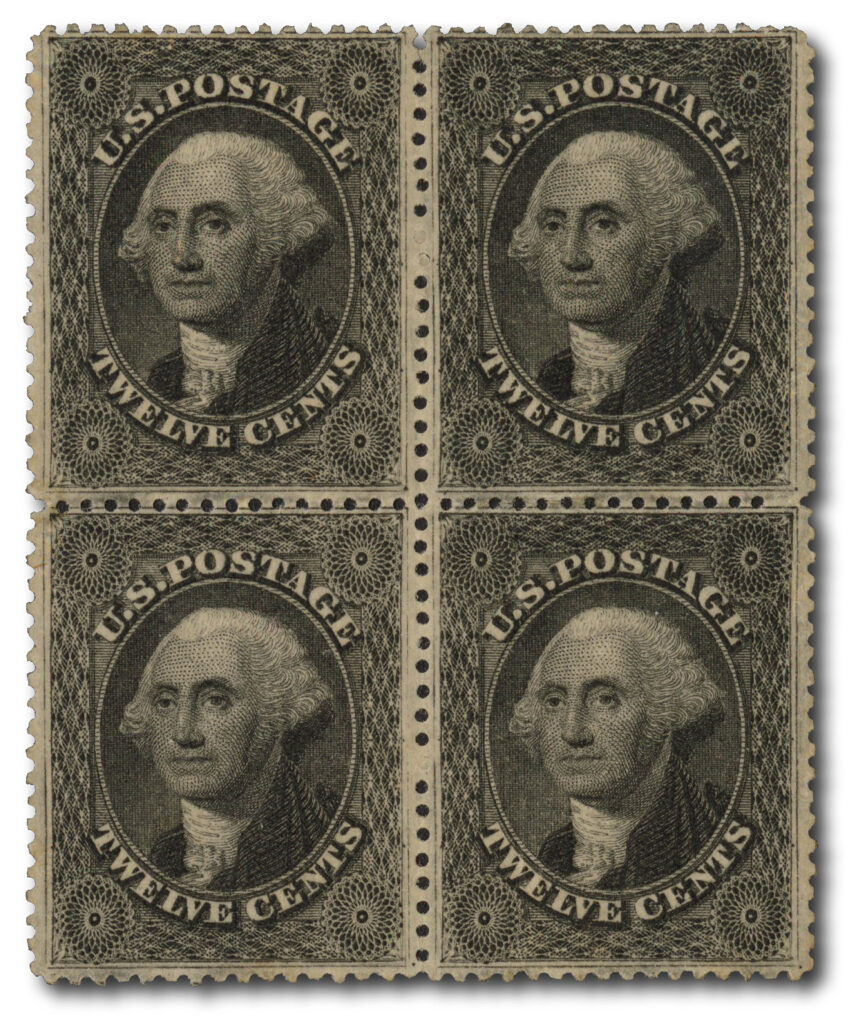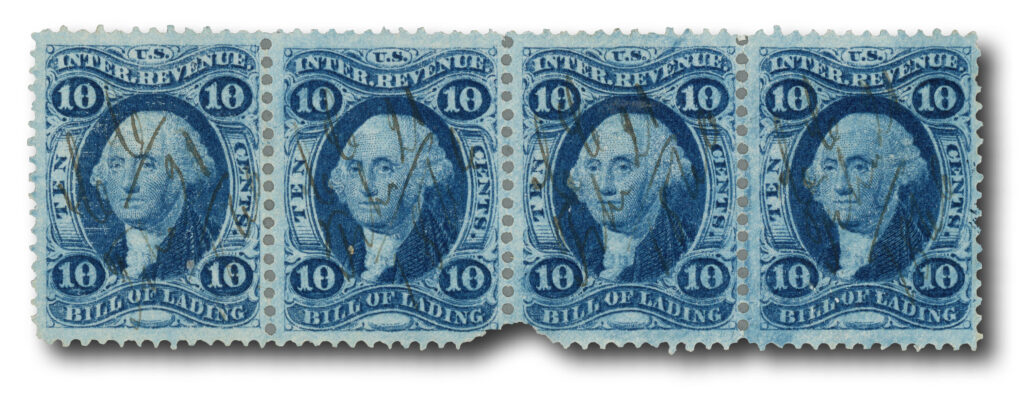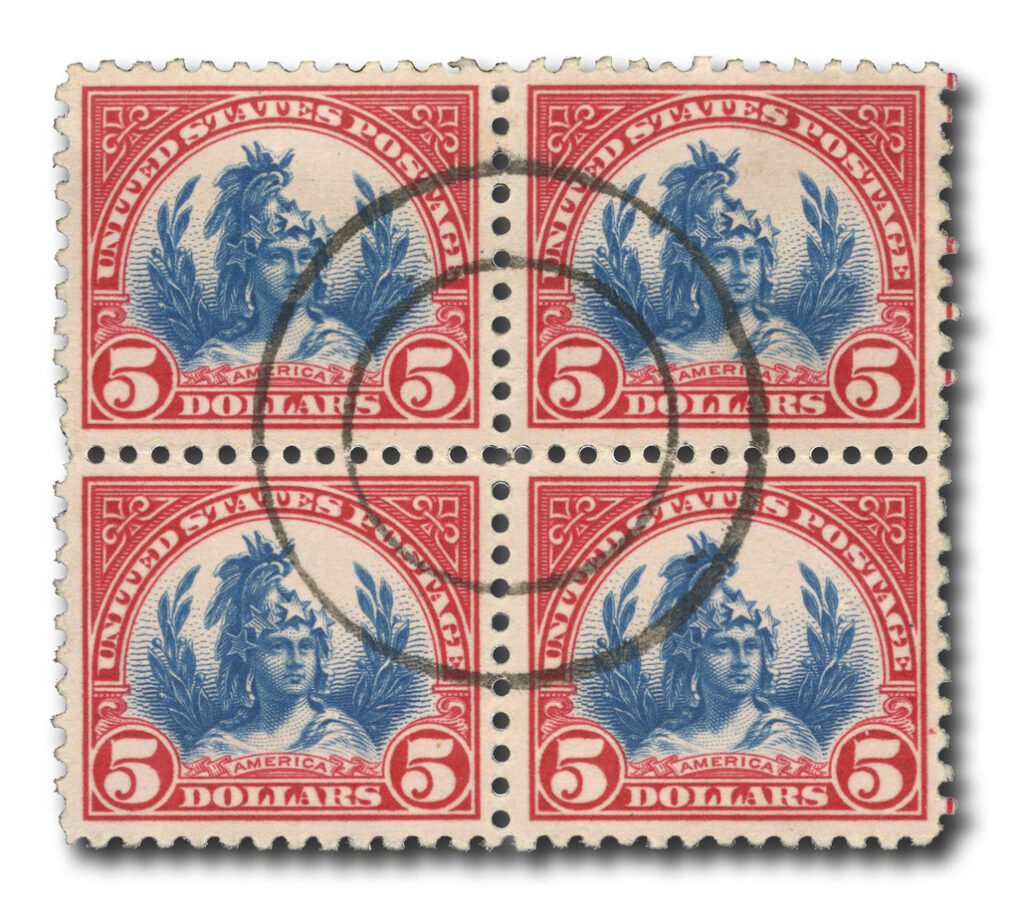Why Collect Stamp Blocks and Strips of Four?
The story is a little different depending on the era. Most collectors want single stamps because they fit nicely in an album, look uniform, and they just want an example for their collection. A minority of collectors want a block or strip.
The broad appeal for these is scarcity or rarity, and eye appeal (blocks of 4 are balanced and pretty).
For stamps issued before 1900 or so, most stamps used were single stamps or pairs. Look at the Banknotes (US #182-191) and we have 1¢, 2¢, 3¢, 6¢, up to 90¢. The most common use was a single stamp to pay the postage rate. A mailer used a 10¢ instead of two 5¢ stamps. When using more than one stamp, almost always the stamps are in a horizontal strip, filling the space between the top of envelope and address. So, a block of 4 or larger was unusual. If the rate called for 4 stamps, almost always, it’s a strip of 4. So an old used block of 4 is rare. Mint blocks are uncommon because few mint sheets are still intact after 150 years. They were broken up into smaller pieces, plate block, corner blocks, singles.
It’s the same story with first issue revenue stamps. They were used in strips. Blocks are 10x to 50x scarcer than a strip of 4 stamps. Using stamps as a strip was the custom so blocks are scarce or rare.
Used high value blocks exist because they often paid registered mail fee on valuable and/or heavy packages. Many/most of the early the 20th century blocks are the Federal Reserve mailing money or other valuable stuff to banks. Here is a link to some envelopes with big multiples. Genuine used blocks of 4 early 20th century are still scarce, but not as scarce as 19th century.

Registered Mail Envelope from Siegel Auction Galleries
According to the Siegel descriptions, the registered mail fee was 1/8,800th of the value plus more for postage. So, a block of four $5 stamps = $20 x 8,800 = $176,000. That’s cool to think a block of stamps paid the fee to carry that much value. And cool to think the Federal Reserve used the Post Office to deliver money. Roads were primitive, with few armored cars. Trains went everywhere. Registered mail was secure. Post office workers on the trains were issued revolvers to protect the mail. Some money went by bags, maybe silver dollars or gold pieces, and a tag with stamps was affixed to the bag. So, there are more blocks used on tags than envelopes.
Another reason to collect blocks of four is beauty. Collectors like balance. A block of 4 often is pretty. The US #573 block pictured above with a ‘favor cancel’ is beautiful. A favor cancel is different from a normal cancel. Normally high-value stamps from 1800s and into the mid-20th century have a big black cancel because the post office didn’t want the stamps reused. A light cancel increased the chance of removing the cancel to use again. That’s why many high value stamps have the heaviest cancels. This beautiful #573 block was probably used by a stamp dealer or collector to mail something to a friend. He asked the postal clerk to put a light cancel on the block knowing he would get it back.





